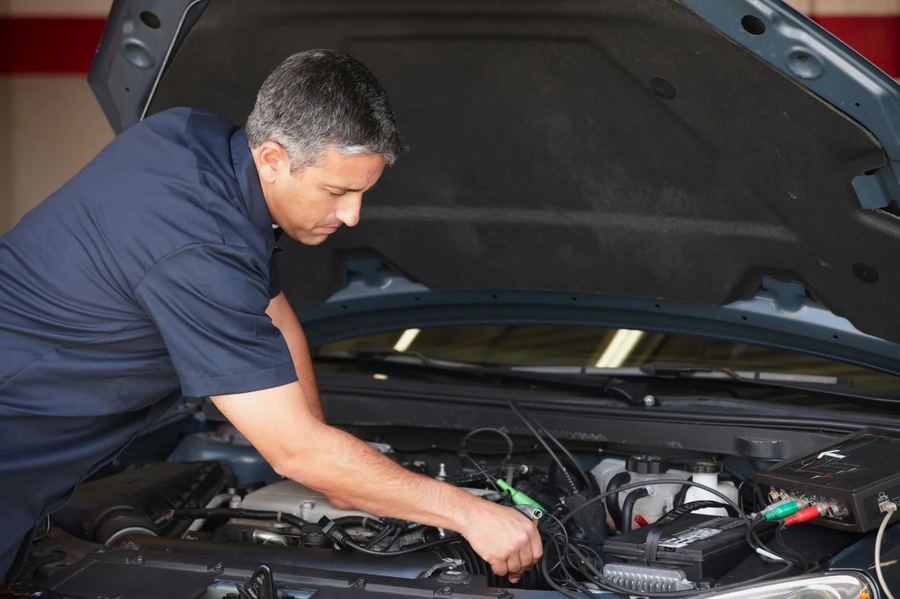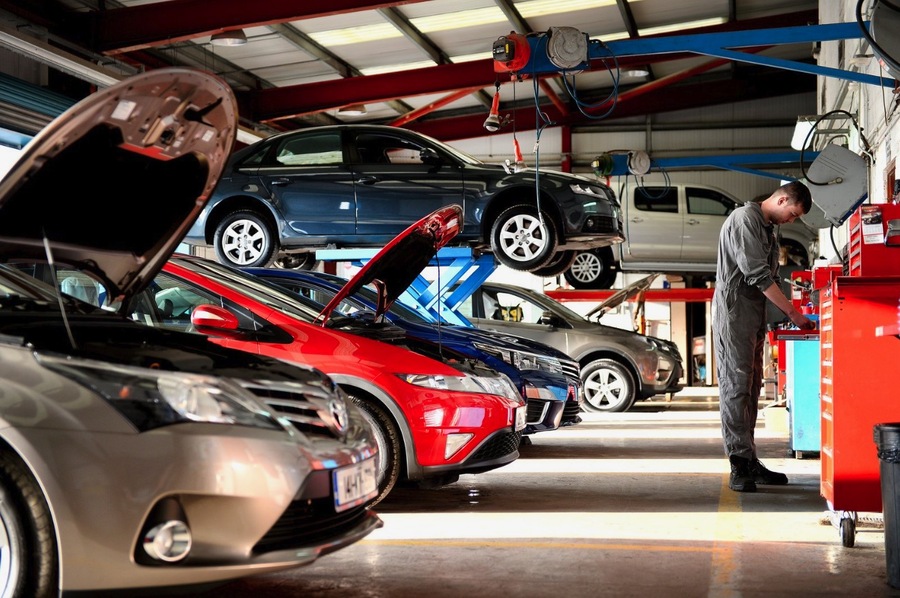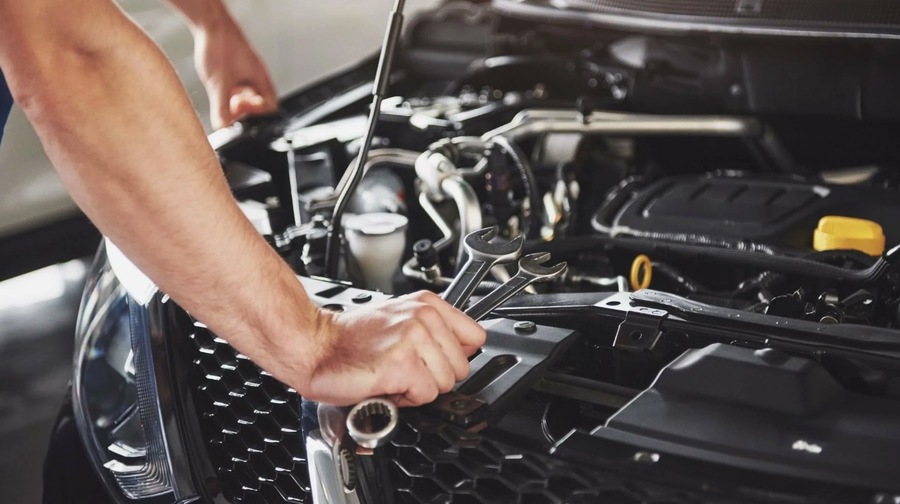
Automotive maintenance is a comprehensive approach to vehicle care that includes a series of preventive measures and procedures designed to maintain and improve vehicle performance over time. This includes everything from routine inspections and minor adjustments to more complex repairs and replacement parts. By maintaining a regular maintenance schedule, vehicle owners can prevent minor problems from becoming major ones, thereby saving money and extending the life of the vehicle. Effective vehicle maintenance not only keeps your vehicle running smoothly, but also improves fuel efficiency, safety, and maintains the overall value of your vehicle. Use rent car Dubai and make sure your rental car is in excellent condition.
Scheduled Maintenance: A Preventive Measure
Scheduled maintenance, often referred to as preventative maintenance, involves carrying out specific procedures at predetermined intervals as recommended by the vehicle manufacturer. These intervals can be based on time (e.g., every six months), mileage (e.g., every 10,000 kilometers), or certain driving conditions (e.g., frequent short trips or heavy towing). The purpose of scheduled maintenance is to catch and correct potential issues before they lead to significant damage or breakdowns. Typical tasks included in scheduled maintenance are oil and filter changes, brake inspections, tire rotations, and fluid level checks. Adhering to the manufacturer’s maintenance schedule helps ensure that the vehicle remains in peak operating condition and can help avoid costly emergency repairs.
The Role of Maintenance and Repair
Maintenance and repair are fundamental to the longevity and reliability of any vehicle. Regular maintenance tasks such as changing the oil, replacing filters, checking the brakes, and rotating tires are crucial for preventing wear and tear and keeping the vehicle running efficiently. These preventive measures help maintain the vehicle’s performance, fuel efficiency, and safety. Repairs, on the other hand, address specific issues that arise due to wear and tear or unexpected damage. This can range from fixing a minor issue like a cracked windshield to major repairs such as engine or transmission overhauls. Together, maintenance and repair ensure that the vehicle remains safe, reliable, and efficient throughout its lifespan.
Historical Perspective: Henry Ford’s Vision
Henry Ford was a pioneer in the automotive industry, not just for his innovations in manufacturing but also for his visionary approach to customer service. Ford believed that the key to customer loyalty was not only producing reliable vehicles but also providing exceptional after-sales support. To this end, he introduced the concept of car maintenance and repair services as a standard offering for all Ford vehicles. Buyers of Ford cars were entitled to a range of services, including routine maintenance, repairs, and operational assistance. This approach ensured that Ford vehicles remained in good working condition and that customers felt supported throughout their ownership experience. By building a network of service centers and ensuring that parts and expertise were readily available, Ford was able to build a strong and loyal customer base. This strategy significantly contributed to the success and popularity of Ford vehicles.

Types of Car Maintenance
Car maintenance is broadly classified into two categories: mandatory maintenance and situational maintenance.
Mandatory Maintenance
This category includes all the essential services that need to be performed at specific intervals as recommended by the manufacturer. For instance, an oil change is typically required every 15,000 kilometers to ensure the engine runs smoothly. Other mandatory services might include brake inspections, tire rotations, and filter replacements. These tasks are crucial for maintaining the vehicle’s performance and preventing major issues.
Situational Maintenance
Unlike mandatory maintenance, situational maintenance arises as a need based on the vehicle’s condition and usage. This type of maintenance is often identified during routine inspections or when the vehicle starts showing signs of trouble. For example, if a driver notices unusual noises from the engine or a drop in performance, a mechanic might identify and address the issue during an inspection. Situational maintenance ensures that any unexpected problems are promptly addressed to prevent further damage.
Classification of Maintenance for Passenger Cars
Car maintenance can be further detailed into several specific categories based on the frequency and nature of the service.
Daily Maintenance
Daily maintenance involves simple checks that can be performed by the vehicle owner before driving. This includes checking tire pressure to ensure they are properly inflated, inspecting fluid levels such as oil, coolant, and brake fluid, and ensuring all lights and signals are functioning correctly. These daily checks help identify potential issues early and ensure the vehicle is safe to drive.
Zero Maintenance (0)
Zero maintenance, or the initial service, is typically conducted at the first 1,000 kilometers or one month after the vehicle’s purchase. This initial check is crucial to ensure that all systems and components are functioning as expected and to address any minor issues that may have arisen since the vehicle left the factory. Tasks might include checking fluid levels, tightening bolts and nuts, and inspecting the overall condition of the vehicle.
Periodic or Numbered Maintenance (1 to 10)
-Minor service typically performed every 5,000 kilometers. This might include an oil change, filter replacement, and a basic inspection of the vehicle’s systems.
– Major service conducted every 10,000 kilometers, which includes more comprehensive checks such as brake inspections, tire rotations, and a detailed examination of the engine and transmission.
-3 to 10: These services increase in complexity and thoroughness, addressing critical components and systems at higher mileage intervals. For instance, a service at 50,000 kilometers might involve replacing timing belt, inspecting the suspension system, and a thorough check of the electrical systems.
Seasonal Service
Seasonal service involves preparing the vehicle for specific weather conditions. For example, winter service might include checking and replacing antifreeze, inspecting the battery, and switching to winter tires to ensure the vehicle can handle cold weather conditions. Similarly, summer service might focus on the air conditioning system, coolant levels, and tire condition to cope with hot temperatures.
Car Maintenance in the UAE
In UAE, car maintenance is particularly important due to the region’s extreme weather conditions. High temperatures and dusty environments can accelerate wear and tear on vehicles, making regular maintenance essential. Specific maintenance tasks commonly performed in the UAE include:
Air Conditioning System Checks: Given the extreme heat, ensuring the air conditioning system is functioning properly is crucial for driver and passenger comfort.
Cooling System Maintenance: Regular checks of the coolant levels and the condition of the radiator are necessary to prevent overheating.
Battery Inspection: The high temperatures can shorten battery life, so frequent inspections and replacements are often needed.
Tire Maintenance: The hot roads can cause tires to wear out faster, making regular checks for tire pressure and condition essential for safety.
The Importance of Timely Maintenance
Timely maintenance of vehicle components and assemblies is vital for several reasons. Firstly, it significantly extends the vehicle’s service life by preventing wear and tear and addressing minor issues before they become major problems. Secondly, regular maintenance is much cheaper than repairs, as it helps avoid costly breakdowns and extensive damage. Finally, ensuring the vehicle is in good working condition is crucial for the safety of the driver and passengers. Regular maintenance checks help detect potential safety issues, such as worn-out brakes or tires, ensuring the vehicle is safe to drive.
Conclusion
In conclusion, car maintenance is an essential aspect of vehicle ownership, encompassing a range of preventive and corrective measures. The historical perspective provided by Henry Ford highlights the importance of customer support and continuous improvement in building customer loyalty. Regular and timely maintenance ensures that the vehicle remains reliable, efficient, and safe throughout its lifespan. By adhering to a comprehensive maintenance schedule, vehicle owners can enjoy peace of mind, knowing their car is well-maintained and ready for any journey.
